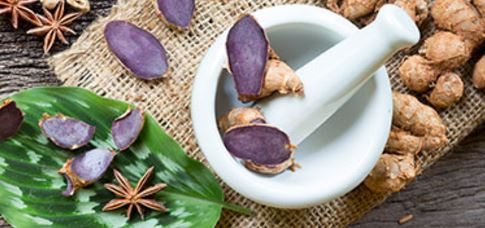Role of Dashanga Lepa in Prameha Pidika
DOI:
https://doi.org/10.21760/jaims.9.8.24Keywords:
Prameha Pidaka, Dashanga Lepa, Diabetes, Diabetic ulcerAbstract
Diabetes is a sickness recognized for its multifaceted headaches. Diabetic ulcer is one of the primary complications of diabetes. Diabetes impacts more than 8% of Indian person population. Up to 25% of diabetic sufferers develop foot ulcers. greater than 1/2 of foot ulcers come to be inflamed and require hospitalization and 20% of infections outcomes in amputation. Early powerful control can reduce the severity of complications along with preventable amputations and viable mortality and can also enhance universal pleasant of lifestyles. thousands of researches are being executed in this in which Ayurveda has a main role. distinctive numbers of Prameha Pidakas are cited in Ayurvedic Classics, according to Acharya Sushruta there are 10 distinctive styles of Prameha Pidakas. Dashanga Lepa is a poly herbal practice of Ayurveda, used to treat many skin ailments and Prameha Pidaka. In this article details description regarding Prameha Pidaka and Dashanga Lepa is explained.
Downloads
References
Acharya YT, Caraka Samhita, Ayurveda Dipika Commentary of Chakrapanidatta, Sutrasthana, Chapter 17", 82 Shloka, Reprint., Varanasi, Chaukhambha orientalia: 2011.p.103.
Bahaddhur Syar Raja Radhakantadeva, Shabdakalpadruma, 1" edition, 3 reprint., Delhi, Naag publications, 2006, p.140/141
Shastri Ambikadutta K, Sushrutha Samhitha of Maharshi Sushruta, Edited with Ayurveda Tatwal Sandipika, Nidana Sthana, Chapter 6, 16 Shloka, 1" Edition, Reprint., Varanasi, Chaukhamba Sanskrit Sansthan, 2014;p.329.
Acharya YT, Caraka Samhita, Ayurveda Dipika Commentary of Chakrapanidatta, Sutrasthana, Chapter. 17 82 Shloka, Reprint., Varanasi, Chaukhambha orientalia: 2011.p.103.
Shastri Ambikadutta K, Sushrutha Samhitha of Maharshi Sushruta, Edited with Ayurveda Tatwal Sandipika, Nidana Sthana, Chapter 6, 16 Shloka, 1" Edition, Reprint., Varanasi, Chaukhamba Sanskrit Sansthan, 2014;p.329.
Acharya YT, Caraka Samhita, Ayurveda Dipika Commentary of Chakrapanidatta, Sutrasthana, Chapter 17 82 Shloka, Reprint., Varanasi, Chaukhambha orientalia: 2011.p.103.
Sharma SP, editor. Hindi translation. 7th ed. Varanasi: Chaukhambha Amara BharataPrakashana; 1977. “11th Adhyaya. Uttarasthana” Sharangadhara Samhita; p. 415. [Google Scholar]
Vaidhya BG, editor. Hindi translation. Vol. 2. Varanasi: Chaukhambha Bharati Academy; 2005. “547th Drug” Nighantu Adarsha; p. 733
Trikramji AJ, editor. Charaka Samhita. 5th ed. Varanasi: Chaukhambha Sanskrit Sansthan; 2006. “13th Adhyaya” Sutra sthana; p. 399. [Google Scholar]
Kemper KJ. Valerian. Longwood Herbal Task Force (Internet) 1999. [Last accessed on 2011 Jul 13]. Available from: http://www.longwoodherbal.org/valerian/valerian.pdf.
Gupta KA, Neeraj T, Madhu S, editors. Vol. 4. New Delhi: Indian Council of Medical Research; 2006. Quality standards of Indian medicinal plants; p. 212.















